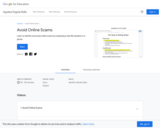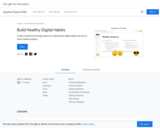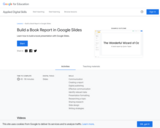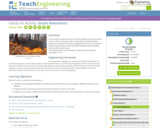
Learn how to distinguish facts from opinions by using a list of guiding questions.
- Subject:
- Arts
- English Language Arts
- Material Type:
- Reading
- Provider:
- Annenberg Learner
- Date Added:
- 05/05/2022

Learn how to distinguish facts from opinions by using a list of guiding questions.
![ArtsNow Learning: Mona Mesa: What is Your Opinion? [PDF]](https://openspace.infohio.org/static/newdesign/images/materials/default-thumbnail-index.png)
In this lesson, students look at a print of "Mona Lisa" by Leonardo DaVinci and talk about what they see, searching for visual clues to help them form an opinion. They discuss the importance of portrait paintings during the Renaissance era, as well as in this era. Students will then visually portray themselves in the body of Mona Lisa, thus creating a self-portrait, Mona MEsa!

Learn to identify and avoid online scams by analyzing a real-life situation in a group. Time to complete: 45-90 minutes

As part of the BBC's Skillswise unit, this resource covers the basics of separating fact from opinion through a worksheet, a factsheet, and a quiz.

Learn about bees, their habitat and how to interact with a swarm in this Wild TV video segment.

In this lesson, students compare two texts written by the same author, Leo Lionni. Then they will write an opinion piece on which story is their favorite and why.

Links to 27 lessons and activities that build student skills in standard W.3.1b: Provide reasons that support the opinion.

Students need to have lots of opportunities to share their opinions based on text. In this lesson, the teacher will read the story, Jack and the Beanstalk, multiple times before the students create their opinion. The detailed process of modeling this skill, an example of a completed student's work, and a video of the lesson are provided.

Create a healthy technology balance by reflecting on digital habits with one of three creative projects. Time to complete: 6-9 hours

Learn how to build a book presentation with Google Slides. Time to complete: 45-90 minutes

Students experience the information aftermath of a fictional event as it unfolds on social media. They also learn about five common logical fallacies, then evaluate the evidence in several arguments. A free educator account is necessary to assign this Checkology lesson.

Learn to determine the credibility of a piece of information by identifying its primary purpose or “InfoZone”: news, opinion, entertainment, advertising, propaganda and raw information. A free educator account is necessary to assign this Checkology lesson.

Learn about the history of editorial cartooning as a unique and powerful form of opinion journalism and practice analyzing cartoons from the 1700s to the present day. A free educator account is necessary to assign this Checkology lesson.

Understand news media bias by learning about five types of bias and five ways it can manifest itself, as well as methods for minimizing it. A free educator account is necessary to assign this Checkology lesson.

This guide is about the many facets and considerations involved when writing a summary. Also provides the reader options for which type of summary they are interested in researching, and provides a detailed analysis of each. Th e links on the right will guide you to the desired summary style including position or reaction summaries.

The subtitle of this essay is "How Presidents Have Come to 'Run the Country' by Usurping Legislative Power." It discusses how the Constitution defines executive powers in a general way, with few limitations on the power of the President to overrule the powers of Congress or state governments. The author goes on the outline how the issue of the separation of powers should be a major concern.

Strategies to help students recognize the difference between fact and opinion provided by a standardized test preparation site intended for fourth grade. Includes teaching ideas such as analyzing facts and opinions in newspapers, and opinion/ proof notes.

Learn about the lives of gorillas born in captivity in this video segment from Nature. [8:21]

Ten useful ideas for making oral presentations more effective and interesting. CCSS.ELA-Literacy.CCRA.SL.4

In this activity, students will conduct a survey to identify the environmental issues (in their community, their country and the world) for which people are concerned. They will tally and graph the results. Also, students will discuss how surveys are important when engineers make decisions about environmental issues.